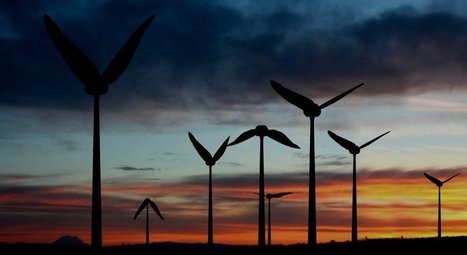"A North African company has developed what it contends is a paradigm-shifting wind turbine technology based on the flapping of hummingbird wings. Any potential paradigm shifts are down the road a bit, but based on some remarkable images and new demo videos, the clean energy machine may be the prettiest wind turbine ever invented. Developed by Tyer Wind, a startup based in Tunisia, the turbine uses biomimicry principles to replicate the mechanical action of hummingbird wings. The design is fundamentally different from standard rotor-based wind turbines because instead of converting linear motion - wind blowing across the land - into a circular motion, it converts it into a figure-eight pattern. Not only is that shape the same as the one hummingbird wings make while the birds hover, but it also generates energy on both the upstroke and the downstroke.
Research and publish the best content.
Get Started for FREE
Sign up with Facebook Sign up with X
I don't have a Facebook or a X account
Already have an account: Login
 Your new post is loading... Your new post is loading...
 Your new post is loading... Your new post is loading...

Marcelo Errera's curator insight,
November 26, 2016 7:58 AM
Very interesting feature. Indeed Nature has undergone a long process of design evolution.
Altin Pevqeli's curator insight,
September 14, 2015 10:26 PM
If they did make turbines inspired by the flight of owls which is silent, it would be a tremendous job. It would solve one of the biggest problems of turbine which is noise. If there isn't much noise people wouldn't mind them, making it so people could build more in areas.

trendspotter's comment,
October 25, 2013 5:35 PM
Well, Scoopit fucked it up :( I had a line break for each link..
|

Marcelo Errera's curator insight,
February 20, 2017 7:21 PM
Another interesting example of design evolution. Those blades provide a good compromise between drag and net torque. It is a finite-size system which design is evolving to facilitate the flow of energy from the wind to a rotating axis.

Jenny84's curator insight,
May 13, 2016 2:18 PM
Check this! It's quite interesting. What do you think?

Michael Holder's curator insight,
January 13, 2015 6:43 PM
Perhaps the beginning of the end and the extinction of mammoth Industrial Wind Turbines and their globally corrupt Corporate boon-doggle. One can only hope - good riddance! |




















